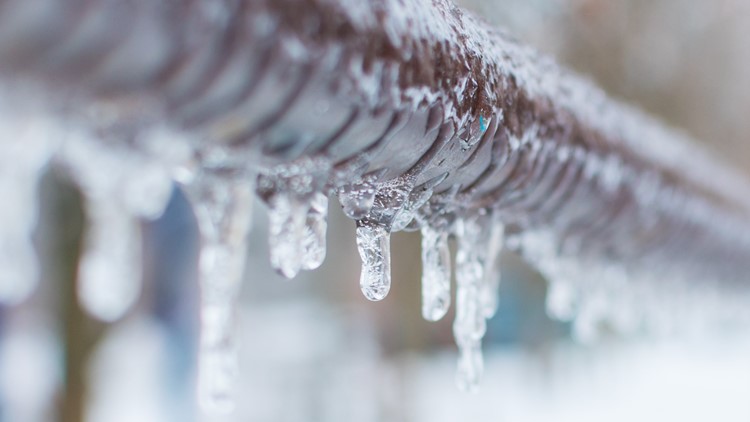Crucial Advice for Avoiding Frozen Pipes in Winter Conditions
Crucial Advice for Avoiding Frozen Pipes in Winter Conditions
Blog Article
In this article underneath you will find a good deal of excellent additional info in regards to Helpful Tips to Prevent Frozen Pipes this Winter.

Winter can damage your plumbing, specifically by freezing pipelines. Right here's how to stop it from occurring and what to do if it does.
Introduction
As temperature levels drop, the danger of frozen pipes rises, potentially bring about costly fixings and water damage. Recognizing just how to avoid icy pipes is vital for homeowners in chilly climates.
Avoidance Tips
Shielding vulnerable pipes
Cover pipelines in insulation sleeves or use warmth tape to protect them from freezing temperatures. Concentrate on pipes in unheated or outside areas of the home.
Heating methods
Maintain indoor rooms adequately heated, especially locations with pipes. Open up cabinet doors to enable cozy air to circulate around pipes under sinks.
How to determine frozen pipes
Search for reduced water flow from faucets, uncommon smells or sounds from pipelines, and visible frost on exposed pipes.
Long-Term Solutions
Architectural changes
Take into consideration rerouting pipelines away from outside wall surfaces or unheated areas. Add additional insulation to attics, cellars, and crawl spaces.
Upgrading insulation
Invest in top notch insulation for pipes, attic rooms, and walls. Proper insulation assists preserve constant temperature levels and reduces the risk of frozen pipelines.
Securing Outdoor Pipes
Garden tubes and outdoor taps
Disconnect and drain pipes garden tubes before winter months. Install frost-proof faucets or cover exterior taps with protected caps.
Recognizing Icy Pipes
What triggers pipelines to ice up?
Pipelines freeze when revealed to temperatures below 32 ° F (0 ° C) for prolonged durations. As water inside the pipelines ices up, it expands, putting pressure on the pipe walls and potentially triggering them to rupture.
Risks and damages
Frozen pipelines can result in water disturbances, residential property damage, and pricey repair work. Ruptured pipelines can flooding homes and cause substantial structural damage.
Indications of Frozen Pipes
Recognizing frozen pipes early can prevent them from bursting.
What to Do If Your Pipelines Freeze
Immediate actions to take
If you presume icy pipes, keep taps available to eliminate stress as the ice melts. Make use of a hairdryer or towels taken in hot water to thaw pipes slowly.
Final thought
Avoiding icy pipelines calls for proactive measures and quick responses. By understanding the causes, indications, and preventive measures, house owners can secure their pipes throughout winter.
5 Ways to Prevent Frozen Pipes
Drain Outdoor Faucets and Disconnect Hoses
First, close the shut-off valve that controls the flow of water in the pipe to your outdoor faucet. Then, head outside to disconnect and drain your hose and open the outdoor faucet to allow the water to completely drain out of the line. Turn off the faucet when done. Finally, head back to the shut-off valve and drain the remaining water inside the pipe into a bucket or container. Additionally, if you have a home irrigation system, you should consider hiring an expert to clear the system of water each year.
Insulate Pipes
One of the best and most cost-effective methods for preventing frozen water pipes is to wrap your pipes with insulation. This is especially important for areas in your home that aren’t exposed to heat, such as an attic. We suggest using foam sleeves, which can typically be found at your local hardware store.
Keep Heat Running at 65
Your pipes are located inside your walls, and the temperature there is much colder than the rest of the house. To prevent your pipes from freezing, The Insurance Information Institute suggests that you keep your home heated to at least 65 degrees, even when traveling. You may want to invest in smart devices that can keep an eye on the temperature in your home while you’re away.
Leave Water Dripping
Moving water — even a small trickle — can prevent ice from forming inside your pipes. When freezing temps are imminent, start a drip of water from all faucets that serve exposed pipes. Leaving a few faucets running will also help relieve pressure inside the pipes and help prevent a rupture if the water inside freezes.
Open Cupboard Doors
Warm your kitchen and bathroom pipes by opening cupboards and vanities. You should also leave your interior doors ajar to help warm air circulate evenly throughout your home.

I found that blog entry about How To Avoid Freezing Pipes while doing a search on the web. If you please set aside a second to share this blog if you enjoyed reading it. I am grateful for your time. Return soon.
Give Me A Quote! Report this page